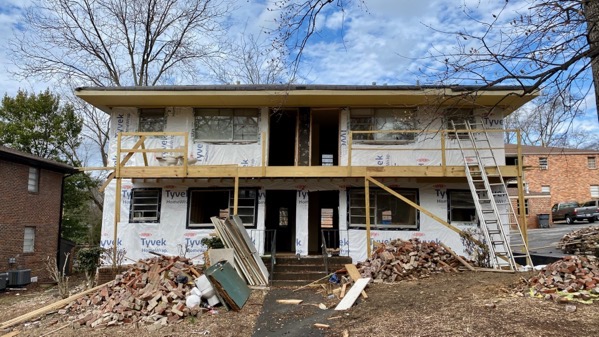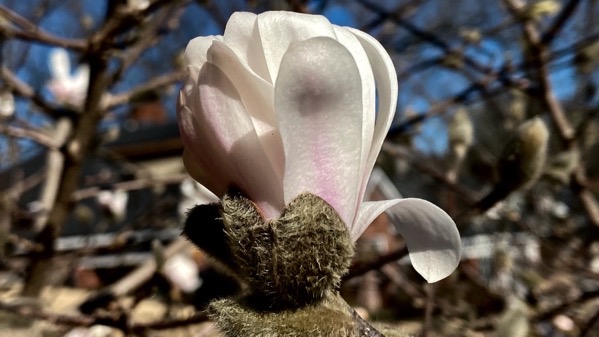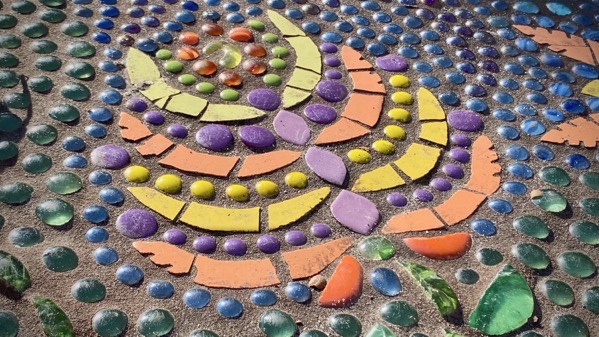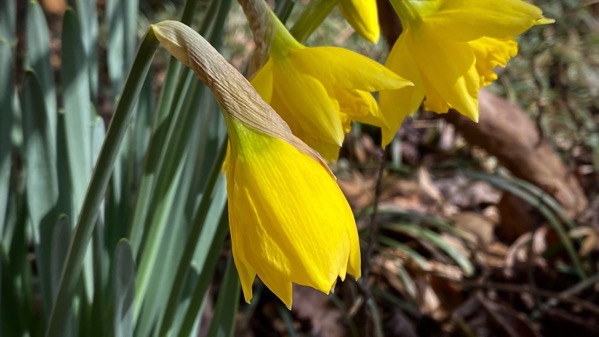Musings

I ran upstairs to go out on the balcony to get a shot of the moon without glass or reflections marring nature. Upward bound, I turned the phone on and tilted it in readiness to make a fine horizontal shot. I opened the door and stepped out turning and raising my phone, framed the photo and clicked.
And the phone, in all its Tim-Apple wisdom, activated the flash. And, no surprise, the image was smudgy crap.
I quickly turned the flash off and tilted the phone up to get the elusive moon through the cloud cover. My luck was gone gone gone. With the moon. As you can see.
Posted at 9:39 PM |
Comments Off on Tech “love”

I went down a deep rabbit hole for most of the afternoon in locating Pottery Neolithic archaeological sites on the southern Sinai peninsula. Archaeological sites can be notoriously difficult to locate (or not), so that’s not surprising…in general. Fieldwork on several of the sites was decades ago, then repeatedly mentioned in later articles and comparative reports, so you’d think the locations would be…not so mysterious. Not.
In the process of this “digging” (forgive me), I came across Saint Catherine’s Monastery. Before the monastery and Saint Catherine, this is where, some say, Moses saw the/a burning bush. Of course, digging deeper, there are several proposed locations for the Moses/burning bush event.
Now, the Catherine is Catherine of Alexandria, who had the misfortune to be born before Romans accepted Christianity but in their territory, and, not surprisingly, she was tortured for her faith. She died about AD 30, or so the story goes. Although she seems to have remained in the Alexandria area (western Nile delta), somehow the Sinai location perhaps 600 km to the SE had Saint Catherine relics, as, they say, her body was found in a nearby cave. Wow; lots to swallow there.
Look how much I learned without ever finding the exact location of Ujrat el-Mehed (the PN site), although I did figure out the general area. Heh. And in the process found (on GooEarth) the ruins of Gebel Abbas Basha, dating to, as I recall, the late 1700s.
See: rabbit hole. Or, perhaps more truthfully, a whole darned burrow complex.
Posted at 10:10 PM |
Comments Off on All about scale

IMHO, four small apartments with rehabbed interiors and exteriors are still four small apartments. Someone is rehabbing the buildings in this complex very slowly, one building at a time. I do not know why they decided to keep the building footprints just as they are.
However, I am glad these units (which must have relatively modest rents compared to nearby single family homes) are in the neighborhood.
Posted at 9:42 PM |
Comments Off on Diversity maintained

Every once in a while I try what I think of as a short vertical pano. It is a vertical pano, and I don’t shoot for very long (ie, the span is brief—it’s chunky not elongated). Here’s one that’s cropped to the aspect ratio that fits this space (16:9).
I think in some cases the distortion in a cropped short vertical pano is “better” (meaning, somehow more aesthetic) than a “regular” shot. With my current iPhone lenses.
Posted at 9:28 PM |
Comments Off on Does this make sense

Well, now, that looks like spring. Early spring. And it is. Plus, sunset was after 6pm.
Posted at 7:09 PM |
Comments Off on Vernal benchmark

Shingles. The nerve ganglia problem. Painful. I’m hoping I’ve dodged it, or am in the process of doing so.
I received shot number one today. I rubbed my arm all the way home from the pharmacy; hope that’ll make the shot-spot less painful. However, the shot-giver (nurse?) said the second one is worse. I plan to rub my arm even longer for that one.
Posted at 7:25 PM |
Comments Off on Oh, well

Admittedly, I have only a teeny dataset, yet based on it I am proposing an index for inflation. It’s based on coins found on the ground in public areas (not by cash registers, silly, that’d be biased). The index is based on frequency of finds and value of the coins, I guess divided by the time spent looking. Plus, consider change over time. Change…heh.
This past week’s data: two quarters in four days. That’s frequent, considering I spent less than five hours outdoors in the last week.
When I was a kid, we found more returnable bottles than coins. Two cents? I can’t remember what we got for them. And, if we found a coin, it was almost always a penny. However, I didn’t spend much time on sidewalks, and rural roads are still not places to find coins, even today, I’m pretty sure.
Conclusion: inflation.
Posted at 8:56 PM |
Comments Off on Inflation index

Meet nandina, an Asian species that looks pretty here this time of the year, with the red tinge in the leaves. I learned about nandina when I worked at a plant nursery in Oregon, as it didn’t grow in the upper Midwest. Don’t eat the (toxic) red berries (not pictured), though.
Posted at 8:39 PM |
Comments Off on Love a parens pair

Quite a while back, early in the Covid lockdown, I hypothesized that certain vehicles had not been moved for a very long time, based on the sediment deposits beneath them and other clues. [Those were the early days of working-from-home and grocery deliveries and other activities that allowed people to stay home and still survive.]
This car, however, seems like it has been not-moved for far longer than just since Covid. What a fine microenvironment for mildew and mold! (Ick.)
Posted at 9:29 PM |
Comments Off on Incubation

It was rainy-wet all day, yet we managed to find a window without much drippiness, just mistiness. Which is manageable.
But we were not alone.
Posted at 7:54 PM |
Comments Off on Ta-dump, ta-dump









